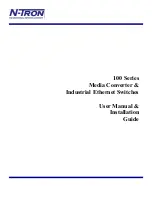
Help Hot Line (U.S. only): 1-800-530-9960
6-25
D-620003-0-20 Rev J
CONFIDENTIAL
Link Budget Analysis
Table 6-24
Link Budget Considerations for Narrowband Systems
Consideration
Description
BTS Transmit Power
The power per carrier transmitted from the base station output
Attenuation between
BTS and Unison
This includes all losses: cable, attenuator, splitter/combiner, and so forth.
On the downlink, attenuation must be chosen so that the maximum power per carrier going into the
Main Hub does not exceed the levels given in Section 6.1.
On the uplink, attenuation is chosen to keep the maximum uplink signal and noise level low enough
to prevent base station alarms but small enough not to cause degradation in the system sensitivity.
If the Unison noise figure minus the attenuation is at least 10 dB higher than the BTS noise figure,
the system noise figure is approximately that of Unison alone. Refer to Section 6.6 for ways to inde-
pendently set the uplink and downlink attenuations between the base station and Unison.
Antenna Gain
The radiated output power includes antenna gain. For example, if you use a 3 dBi antenna at the
RAU that is transmitting 0 dBm per carrier, the effective radiated power (relative to an isotropic
radiator) is 3 dBm per carrier.
BTS Noise Figure
This is the effective noise floor of the base station input (usually base station sensitivity is this effec-
tive noise floor plus a certain C/I ratio).
Unison Noise Figure
This is Unison’s uplink noise figure, which varies depending on the number of Expansion Hubs and
RAUs, and the frequency band. Unison’s uplink noise figure is specified for a 1-1-8 configuration.
Thus, the noise figure for a Unison system (or multiple systems whose uplink ports are power com-
bined) is
NF(1-1-8) + 10*log(# of Expansion Hubs).
This represents an upper-bound because the
noise figure is lower if any of the Expansion Hub’s RAU ports are
not
used.
Thermal Noise
This is the noise level in the signal bandwidth (BW).
Thermal noise power = –174 dBm/Hz + 10
Log
(BW).
Required C/I ratio
For each wireless standard, a certain C/I (carrier to interference) ratio is needed to obtain acceptable
demodulation performance. For narrowband systems, (TDMA, GSM, EDGE, iDEN, AMPS) this
level varies from about 9 dB to 20 dB.
Mobile Transmit
Power
The maximum power the mobile can transmit (power transmitted at highest power level setting).
Multipath Fade
Margin
This margin allows for a certain level of fading due to multipath interference. Inside buildings there
is often one or more fairly strong signals and many weaker signals arriving from reflections and dif-
fraction. Signals arriving from multiple paths add constructively or destructively. This margin
accounts for the possibility of destructive multipath interference. In RF site surveys the effects of
multipath fading are typically not accounted for because such fading is averaged out over power
level samples taken over many locations.
Protocol
Signal
Bandwidth
Thermal
Noise
TDMA
30 kHz
–129 dBm
GSM
200 kHz
–121 dBm
iDEN
25 kHz
–130 dBm
















































